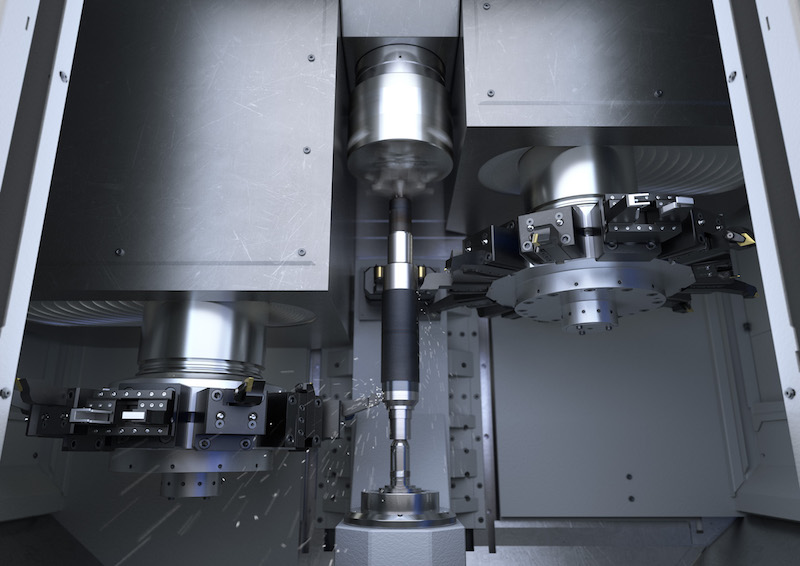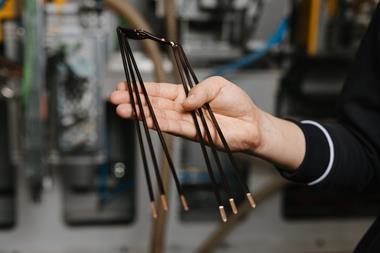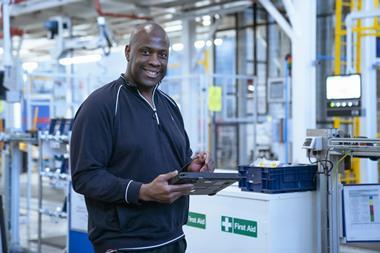
EMAG explains how, as studies predict rapid growth in electromobility, it’s clear that mechanical engineering has a central part to play
 According to the Center of Automotive Management, sales of electric cars in China and the US massively increased last year. In Germany, the market share doubled at a low level. Mechanical engineering has a central role to play in this development: It must develop production technologies that enable safe and precise manufacturing of key components of the electric drive - in much larger quantities than before. One such component is the rotor shaft. It has to transmit the high torque of the electric motor in a precise and stable way. At the same time, the combination of rotor laminations and shaft should be as light as possible in order to increase the range of the electric car. So what is the most efficient way to produce a complex rotor shaft? The EMAG mechanical engineers have been developing a variety of solutions for this purpose, perfectly adapted to component geometry and production planning and ranging from fully automated production systems to customer-specific individual machines.
According to the Center of Automotive Management, sales of electric cars in China and the US massively increased last year. In Germany, the market share doubled at a low level. Mechanical engineering has a central role to play in this development: It must develop production technologies that enable safe and precise manufacturing of key components of the electric drive - in much larger quantities than before. One such component is the rotor shaft. It has to transmit the high torque of the electric motor in a precise and stable way. At the same time, the combination of rotor laminations and shaft should be as light as possible in order to increase the range of the electric car. So what is the most efficient way to produce a complex rotor shaft? The EMAG mechanical engineers have been developing a variety of solutions for this purpose, perfectly adapted to component geometry and production planning and ranging from fully automated production systems to customer-specific individual machines.
Lightweight construction has been one of the central challenges in automotive engineering for decades. Each component, from gear wheel to drive shafts to various housings, is expected to become lighter and smaller in order to reduce fuel consumption. Interestingly, the topic is becoming even more important in electric cars because less weight means covering longer distances without recharging. For this reason, the “range” issue will remain one of the central development objectives in electromobility for the foreseeable future. In this context, massive and heavy electric motor shafts with relatively large laminated rotor cores do not fit the bill. EMAG is currently demonstrating how weight-optimised rotor shafts - and thus, weight-optimised electric motors in general - can be mass-produced. Their specialists for end-to-end production systems have designed a line where soft machining, hardening and hard machining of a hollow (and therefore light) shaft take place one after the other. “All in all, the production of such a component is the perfect type of challenge for EMAG,” explains Ulrich Heiermann, Manager Technical Application at EMAG. “We have all the necessary application know-how, ranging from turning, drilling and milling to hardening and grinding. We have also been developing the matching automation systems for decades. Consequently, the complete line and process development comes from a single source. On the other hand, we also supply customer-specific individual solutions for core sub-processes such as turning or grinding, which might be loaded by hand. Such stand-alone machine installations can also be the starting point for later expansion into a complete automatic line. In both cases, flexible modular solutions are used. From our various technology modules we configure tailor-made machines. We are thus prepared for any challenge.”
Assembled shaft with great advantagesThe “assembled” rotor shaft is an impressive current example of this flexible approach. EMAG was asked to develop a multi-stage production system that would combine soft machining, laser welding, hardening and hard machining. In addition, the shaft is assembled during the process from two different end pieces - a basic principle that is known, for example, from assembled camshafts. In this way, the procedure can be broken down into short and partially parallel sub-processes. In addition, this approach often gives component developers greater freedom. The finishing of this shaft is done in the EMAG system in perfectly timed cycles: In the first two operations (10 and 20) the two different blanks are machined inside and outside, creating also the hollow internal geometry. Four EMAG VL 4 pick-up machines are used for this stage. After a cleaning process (OP 30) the end pieces are joined together in an EMAG ELC 250 machine by laser welding (OP 40) - an extremely fast and safe process. The precisely controlled, concentrated energy of the laser beam allows high welding speeds and involves a minimum of distortions on the welded component. Next, the bearing seats are hardened in a matter of seconds and with high precision in the MIND 750 induction hardening machine by EMAG eldec (OP 50). Hard machining of the shaft starts with external turning in the EMAG VT 4-4 pick-up machine (OP 60) and internal turning in the modular VL series (OP 70). OP 80 and 90 consist of gear-cutting the shaft and finish-turning various shoulders on the outside. The finishing with close tolerances and high demands on surface quality is provided by the final grinding process on a vertical shaft grinding machine of the VTC series (OP 100).
The shaft is then ready for joining with the corresponding laminations. The EMAG automation technology, which ensures transport between the machines, is adapted to customer requirements. For example, line gantries, stacking cells, accumulation conveyor belts or the EMAG proprietary TrackMotion system can be used. In any case, the system benefits from the standardisation of all machines and their optimised interfaces. The customer benefits from a complete solution in the form of a comprehensive system and EMAG as the only contact needed during planning, implementation and service. In addition, the EMAG proprietary pick-up technology ensures speed in the process flow: The shaft (or its two separate components at the beginning) is transported into and out of the machining area by means of a movable workpiece spindle. The vertical turning and milling process is then carried out at high cutting speeds with optimised chip flow.
Fast solution from a single sourceAbout every 45 seconds a finished rotor shaft leaves this line. Unwanted idle times where a machine is at a standstill are reduced to a minimum. “The quality of such a production process is already determined at an early concept phase. EMAG contributes its full range of expertise here - on the various tool applications, the design of multi-functional machine tools and their control and interlinking. The main objective is always to produce optimum components - in the cycle time and quality that the customer is asking for. The customer ultimately decides whether this will be done in an integrated line with high annual volumes or, for example, with hand-loaded individual machines with smaller quantities and more flexibility,” concludes Ulrich Heiermann.




































